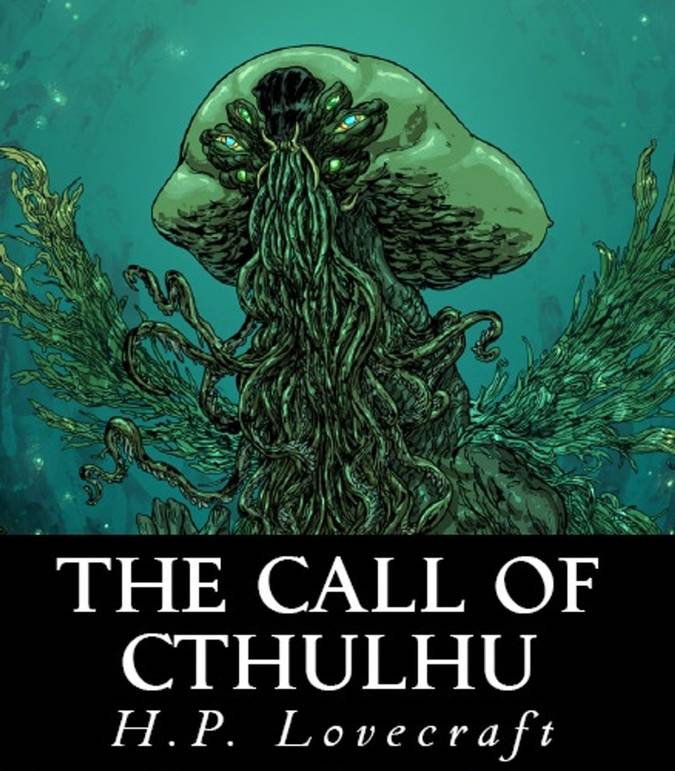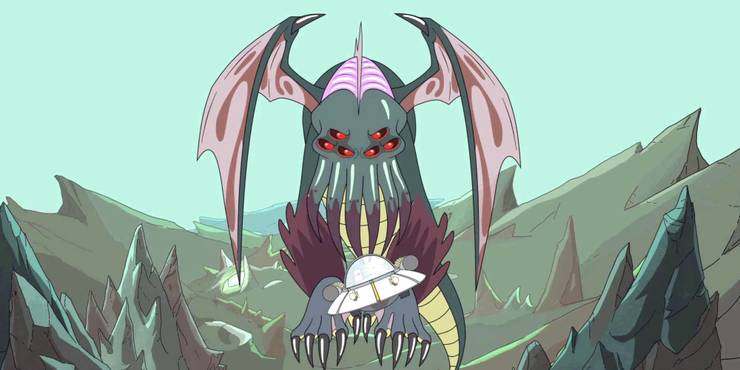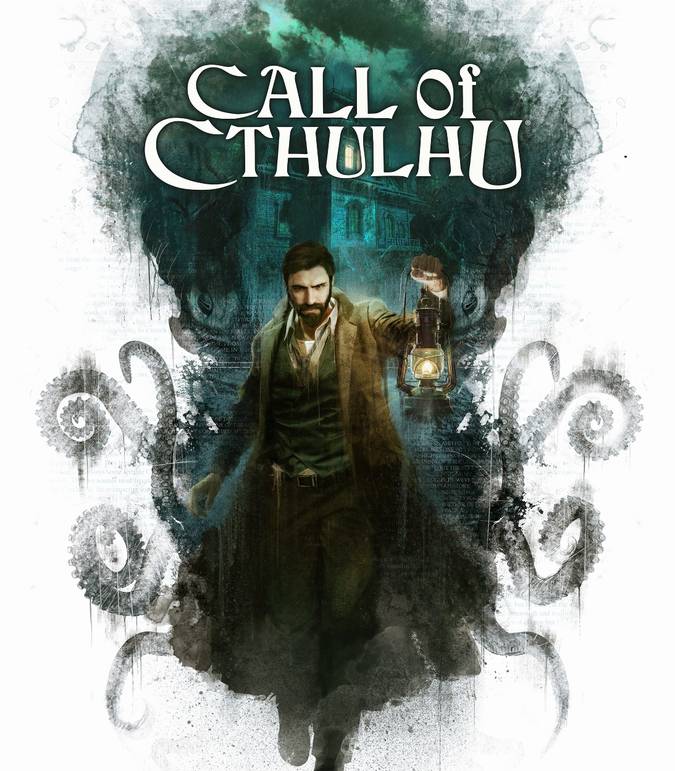H.P. Lovecraft's Cthulhu: Origin & Powers Explained
H.P. Lovecraft's Cthulu is one of his most iconic monsters, and has a mysterious origin story and powers that lend to his horrifying abilities.
BY SHAWN CUNNINGHAM
FEB 03, 2020

H.P. Lovecraft’s most iconic monster, Cthulhu, is an immortal god-like being whose origin and powers are far beyond human understanding.
When H.P. Lovecraft wrote his 1926 short story, The Call of Cthulhu, he shocked readers with Cthulhu, a monstrous being that rose from the ocean and re-formed after a boat crashed into it. Despite this being the creature’s only physical appearance, Cthulhu has continued to be submerged in the popular consciousness, from video games to 2020's aquatic horror, Underwater.
RELATED:What Cthulhu Means For Underwater's Sequel
While popular culture has the creature saving Christmas, Lovecraft himself had dropped hints at the creature’s dark origin and the might of his unimaginable powers, while at the same time refusing to give a clear look at the creature. Pulling together The Whisperer of Darkness, At The Mountains of Madness, and The Call of Cthulhu, it seems that the more that’s uncovered about the creature only yields questions about cosmic wars, doomsday cults, and how differently Cthulhu would be understood if humanity was able to look into its eyes.
RICK & MORTY CTHULHU

Cthulhu's Origin & Powers Explained (In Depth)
![]()
Cthulhu’s origin came to readers in pieces with The Whisperer of Darkness and At The Mountains of Madness. The 1931 novella The Whisperer of Darkness has the protagonist, literature instructor Albert N. Wilmarth, learn about the “Great Old Ones” – a race of cosmic beings from the depths of space. Here, it’s revealed that Cthulhu is a part of these “Great Old Ones,” which make up all of the cosmic beings in the Lovecraftian canon. While references to a war in the depths of space are made, At The Mountains of Madness clarified that Cthulhu and the “Great Old Ones” were all waging war against each other. Cthulhu landed onto Earth, creating the city of R’lyeh from nowhere before going into hibernation, taking the city with it to the ocean depths.
This is where Call of Cthulhu comes in. This 1926 short story showed readers the creature, described as being a “vaguely anthropoid outline, but with an octopus-like head whose face was a mass of feelers.” Since its time on Earth, a Cult of Cthulhu had developed, reaching all across the globe. This doomsday cult wished to awaken the Old One and bring about an apocalyptic age of darkness where the human race would destroy itself in a fit of madness.
This story also showed us some of Cthulhu’s immense powers. A single glance at the creature would drive a person mad just by looking at its face, meaning the video game based on the short story understood the character the best by giving him only a brief cameo at the end. Near Godlike and immortal, Cthulhu’s great strength is impossible to comprehend. When the protagonist of the story strikes it in the head with a boat, Cthulhu’s face merely reforms. As if all that weren’t enough, Cthulhu also possesses psychic abilities and can communicate telepathically – hence why it was able to create a cult while sleeping.

RELATED:Every Sci-Fi Horror Movie Releasing In 2020
Perhaps the most interesting fact about Cthulhu is that it isn’t the most powerful being in Lovecraft’s canon – that belongs to Azathoth, the center of the universe and the ruler of the cosmic deities. In fact, in the grand scheme of things, Cthulhu is merely a footnote in Lovecraft’s work. So why is Cthulhu so popular? Why do audiences care if Cthulhu will appear in Rick and Morty? What makes this creature so special? Publisher’s Weekly notes that Lovecraft’s stories like The Color Out of Space are still terrifying to modern audiences and have a lasting effect on culture and the horror genre. Beyond that, people have a deep-seated fear of what lies beneath, and in that area, Cthulhu absolutely delivers.

Cthulhu's Origin & Powers Explained (In Depth)
Cthulhu’s origin came to readers in pieces with The Whisperer of Darkness and At The Mountains of Madness. The 1931 novella The Whisperer of Darkness has the protagonist, literature instructor Albert N. Wilmarth, learn about the “Great Old Ones” – a race of cosmic beings from the depths of space. Here, it’s revealed that Cthulhu is a part of these “Great Old Ones,” which make up all of the cosmic beings in the Lovecraftian canon. While references to a war in the depths of space are made, At The Mountains of Madness clarified that Cthulhu and the “Great Old Ones” were all waging war against each other. Cthulhu landed onto Earth, creating the city of R’lyeh from nowhere before going into hibernation, taking the city with it to the ocean depths.
This is where Call of Cthulhu comes in. This 1926 short story showed readers the creature, described as being a “vaguely anthropoid outline, but with an octopus-like head whose face was a mass of feelers.” Since its time on Earth, a Cult of Cthulhu had developed, reaching all across the globe. This doomsday cult wished to awaken the Old One and bring about an apocalyptic age of darkness where the human race would destroy itself in a fit of madness.
This story also showed us some of Cthulhu’s immense powers. A single glance at the creature would drive a person mad just by looking at its face, meaning the video game based on the short story understood the character the best by giving him only a brief cameo at the end. Near Godlike and immortal, Cthulhu’s great strength is impossible to comprehend. When the protagonist of the story strikes it in the head with a boat, Cthulhu’s face merely reforms. As if all that weren’t enough, Cthulhu also possesses psychic abilities and can communicate telepathically – hence why it was able to create a cult while sleeping.

RELATED:Every Sci-Fi Horror Movie Releasing In 2020
Perhaps the most interesting fact about Cthulhu is that it isn’t the most powerful being in Lovecraft’s canon – that belongs to Azathoth, the center of the universe and the ruler of the cosmic deities. In fact, in the grand scheme of things, Cthulhu is merely a footnote in Lovecraft’s work. So why is Cthulhu so popular? Why do audiences care if Cthulhu will appear in Rick and Morty? What makes this creature so special? Publisher’s Weekly notes that Lovecraft’s stories like The Color Out of Space are still terrifying to modern audiences and have a lasting effect on culture and the horror genre. Beyond that, people have a deep-seated fear of what lies beneath, and in that area, Cthulhu absolutely delivers.
No comments:
Post a Comment